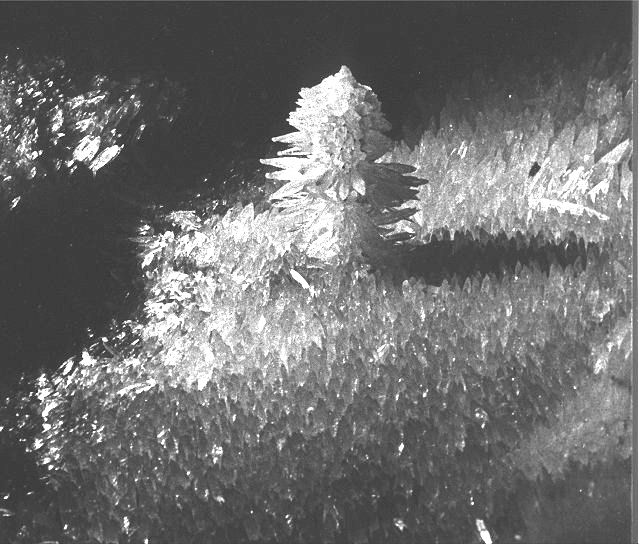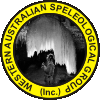(Submitted for publication to the ACMKA Journal February 2002)
In the December issue of the ACKMA journal Anne Wood’s article (Wood, 2001) was sub-titled “CLAP Worth a Round of Applause”. This article listed many of the changes that have occurred in the Leeuwin-Naturaliste National Park (LNNP) over the last ten years since the introduction of the Cave and Abseiling permit system.
The vast majority of these changes have been very positive and seen vast improvements in the status of many caves and karst features in the LNNP. The ridiculous levels of uncontrolled visitation to Calgardup and Giants Caves have been quelled. Also the visitation to Self Guided caves has been significantly reduced by the implementation of firstly a requirement for leaders to hold a Senior First-Aid certificate and subsequently to undertake a TAFE/CALM run leader training course. As indicated by Wood, 2001 this process has reduced the number of qualified leaders from over 500 to about 60.
The reduction in the number of leaders has therefore lead to a significant drop in the number of caver visits to the majority of the Self Guided caves in the LNNP.
This is all very significant for the caves of the LNNP that were under considerable pressure. HOWEVER I find it very galling that this article failed to mention any of the negative aspects of the cave management in the LNNP, which is or has directly impacted on caves within the park. It is vital that cave managers convey the mistakes that are made as well at all the good work. If only the good things are reported the mistakes will continue to be made. Remember EVERYONE makes mistakes – lets minimize the chances of them being repeated elsewhere by reporting them in the ACKMA journal.
The “Christmas Tree” Fiasco
The most significant occurred in 2001 when the “Christmas Tree”, a crystal pool decoration shown below, was virtually destroyed by a permitted party. This formation had successfully survived the 1980’s and 1990’s when access to Dingo Cave was either unrestricted (1980’s) or via a permit system (1990’s).

During these times a visitor to Dingo Cave was likely to meet other cave visitors wandering about with a hand torch and little else. These were generally surfies visiting a cave when the surf was bad on the coast. Significant erosion did occur in the entrance chamber of Dingo Cave during this period. Once again an excellent management initiative to place log steps in the entrance chamber halted the erosion.
However despite the uncontrolled access to Dingo Cave the “Christmas Tree” formation survived unharmed. Then during 2001 after the cave had been gated, track/route marked and only qualified leaders could enter the cave the “Christmas Tree” was severely damaged when a leader attending to one party member allowed other party members to explore onwards unsupervised. To me this would have caused major alarm bells to ring.
Even a mention of the significant loss of the “Christmas Tree” formation, the likes of which I have not seen elsewhere on my travels or in photographs of cave formations from around the world, in Anne’s article would have gone someway to indicate managements level of concern at its loss and/or significant damaging. But it was not mentioned.
At the very least significant discipline should have been handed out to the leader of the party. Instead the “punishment” was three days of community service work track marking caves! I would have considered this a privilege, not a punishment, and something that all leaders should have been trained in on their training courses. As a matter of course, leaders should carry spare track markers and repair/replace track and route markers when they visit any cave.
If they are not able to perform this function then they clearly have not been trained in basic minimal impact caving techniques.
Furthermore given that the most important aspect of any cave leader training scheme is Group Management it is imperative that the training of this aspect of cave leadership should be reviewed. Also it would appear that for the protection of caves that all existing leaders needed re-examination to ensure that appropriate Group Management practices were being used by existing leaders. This could have been undertaken as an addition to the leader training scheme where the application of track and route marking could also be taught.
None of these actions were undertaken.
Route/Track Marking and the Cave Management Advisory Committee (CMAC)
It is clear from the route marking in Dingo Cave that both the Cave Management Advisory Committee (CMAC) and the cave managers, who examined the track/route marking and did not have it modified, do not understand the basic principals of route marking and why it is used.
In order to minimize cavers impacts it is preferable, in caves which are likely to sustain high visitation, to route and/or track mark. Route marking is used not only to ensure that cave leaders do not get lost and cause further cave impact by trying multiple passages to locate the way on/back, but also to reduce impact on some passages.
For example if we have three passages that all lead from Point A to Point B then route marking SHOULD be used on ONE of those tracks to minimize caver impacts on the cave. Route marking one path while leaving the others unmarked should indicate to the leader that the route marked path should be used. In this way all of the caver impact is focused on one path leaving the other two untouched. Clearly the selection of which path to route mark is import and this is when route/track marking training is imperative.
In Nannup Cave many track markers were glued to cave formations and despite strong protest it took over 12 months for John Cugley, the then WASG president, and Steve Wright to convince the CMAC that they should be removed from the formations and affect their removal (Wright, 2000). Track and route marking should be used to reduce caver impacts, not create a further impact by the markers themselves.
Having been one of the original members of the CMAC I know of the many “battles” that had to be fought with other members of the committee to ensure that the conservation of caves was foremost in decisions that were made.
After my resignation in 1997 I was highly concerned, for the caves, by the comments of the part time secretary for the CMAC (who was a CALM employee with no axe to grind regarding caves) who said to me that she was sad that I was leaving the committee as I was the only person on the committee who would stand up for the rights of caves.
The composition of CMAC provides input by user groups who are trying to ensure that the group(s) that they represent continue to have access to caves. They do not appear to have the interests of caves foremost when they are making decisions that may effect cave environments. The removal of CMAC and replacement with a body whose major focus is ensuring the long term conservation of the caves of the LNNP would be the most appropriate action.
Calgardup Development
The development of a tourist cave such as Calgardup Cave which requires infrastructure such as buildings, car parks, roads, toilets, walkways and platforms also requires careful planning to ensure that the impact of the infrastructure on the cave is minimized.
Unfortunately in this case the building was placed adjacent to the cave entrance with no examination of what may lie beneath the proposed building. The car park and toilet were also placed adjacent to or above the cave. All of this infrastructure is likely to or has the potential to impact any cave which lies beneath it. The placement of this infrastructure in this case has a high potential to cause adverse cave impacts due to its proximity to known shallow cave.
Also within the cave, galvanized pipe was used as footings for platforms directly in the cave stream. After complaints the galvanized pipe was replaced with plastic although the galvanizing had already corroded. This too could have been avoided with appropriate planning with consultation.
The artificial damming of the cave stream to produce a lake is also unnecessary and has unknown effects downstream and on the dammed area.
Had an appropriate development plan be constructed and issued for comment prior to the placement of the infrastructure much of these cave threatening issues could have been avoided.
Conclusions
CLAP should receive some applause for ensuring that Cave Leaders in the LNNP Cave and Abseil Permit System have some training prior to taking visitors to Self Guided caves. That level of applause should be tempered with the knowledge that despite this training one of the LNNP’s significant cave formations was severely damaged (destroyed in the eyes of many!). If appropriate quality assurance testing is employed following Leader training the probability of such catastrophe’s would be greatly reduced.
Future developments in the LNNP should undergo wider scrutiny to ensure that the mistakes of the past are not repeated. A set of procedures for development of karst areas should also be developed. (This may be addressed by the IUCN who are developing an “IUCN Guidelines document on Cave Tourism Development”)
The existing CMAC should be abandoned in favour of an appointed body whose focus is entirely Cave and Karst conservation in the LNNP.
References
Wood. A, (2001) Recent Development in Cave Management in the Leeuwin Naturaliste National Park “CLAP – Worth a Round of Applause” ACKMA Journal No 45. pp 13-19
Wright. S, (2000) Opinion – “What are they doing to Nannup Cave?”, WASG Informer Feb 2000.

